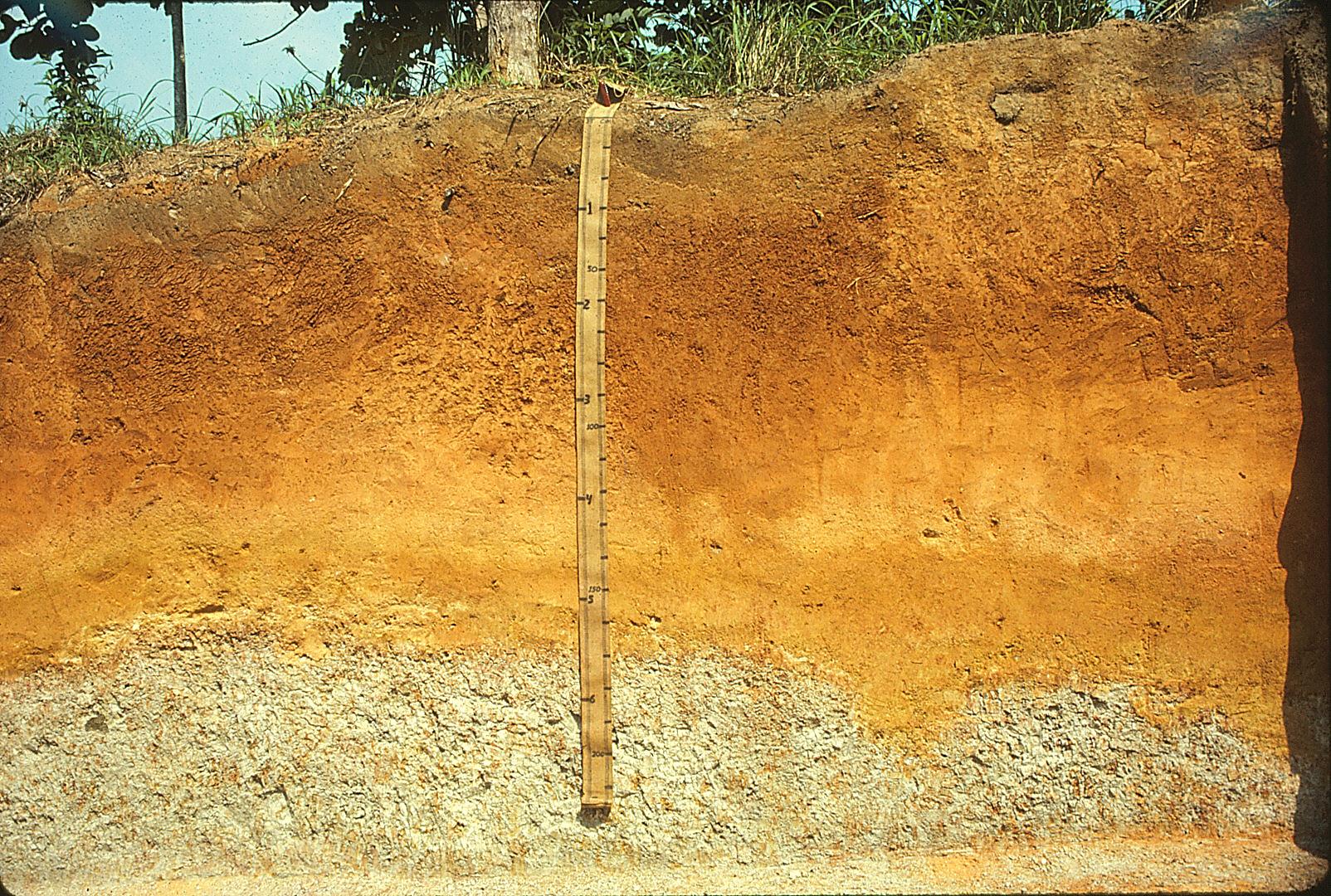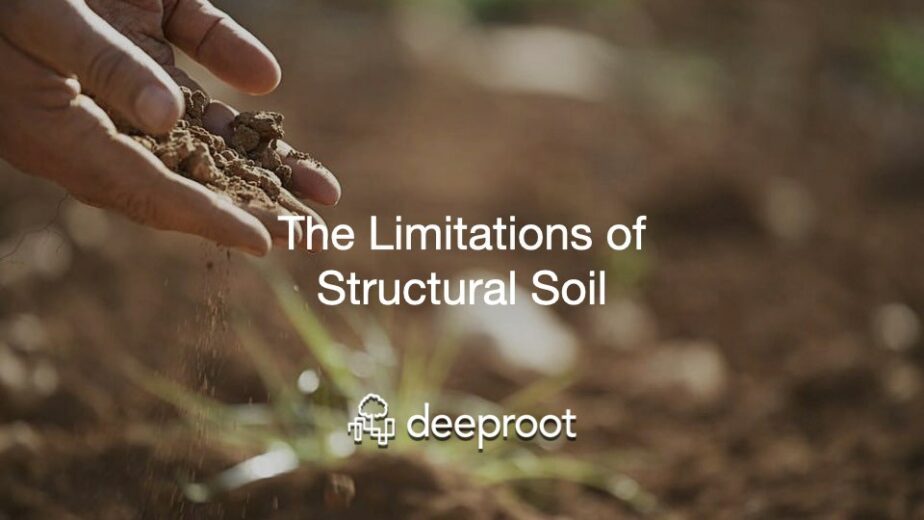A critical part of any landscape architect’s training is to learn how to understand the site conditions before starting the design. There is likely nothing more important than soil to the success of anything placed on it or planted into it. Urban sites, and thus urban soil, make up a large part of the work of the profession – yet the analysis of urban soils is often ignored except as part of a geotechnical engineer’s report on its structural capability. The assumption seems to be that there is nothing there that is of real value, urban soil analysis is too difficult or impossible, and that if a better planting medium is needed then it’s probably best to go buy it.
This approach has led us to ignore a sustainable asset present on many projects. But there is often usable soil resources at many urban sites, and it can be assessed and, with minimum effort, can often be reused as viable planting medium.
Urban soils analysis requires different tools and skills than assessment of soils in agricultural areas. Urban soils are often covered with paving, laced with utilities, severely compacted, and guarded by ownership issues that make traditional sampling difficult. There are not many soil scientists trained in urban soil analysis or who believe that urban soils are worth the effort. A new set of protocols must be developed to analyze this resource, and landscape architects may be uniquely positioned to undertake this work as part of their practice. They do not have to be trained soil scientists and can make reasonable judgments about these soils by using their well-developed observational and analytic skills. The reward for this effort will be to advance sustainability principles while improving outcomes and reducing project cost.
The list of soil properties to investigate is similar to the list that a traditional soil scientist would want to understand, but the degree to which soil can be sampled is significantly reduced. Non-traditional definitions may need be created. It may be that not all properties can be known, but as the list of known factors increases, your ability to reach a conclusion you are confident in also increases. (It will be helpful for the reader to start with a basic introduction to soil in Part 1 of “Up By Roots”, as this series of posts will rely on the technical information in that text).
These soil properties are:
Texture
The proportions of sand, silt, clay, gravel, stones and debris in the soil. Gravel and debris are not usually included in texture descriptions, but they can occasionally become limiting factors and occur frequently enough to deserve consideration. Note that gravel, stones, and even construction debris do not by themselves negatively impact plants unless in significant quantities (greatly above 15% of the volume). There are very few soil textures that will not support plants, different soil textures simply suggest different approaches to soil modification.
Structure
Most urban soils have some level of remnant structure – that is, the peds, clumps, or lumps in the soil after it is graded. This remnant structure is useful to rebuilding soil and drainage even if the clumps are the result of previous compaction. Urban soils also have undisturbed soil structure below the surface layer that is also useful to both drainage and root growth. Identifying soil structure is difficult but can be an important factor in determining the usefulness of the soil and how to remediate problems.
Density
The level of compaction (aka bulk density) is urban soil is frequently the most limiting factor to root growth. It is critical to assess compaction levels but very difficult to determine specific bulk density in areas covered by paving. Bulk density will change with depth and the amount of grading. In recent fill soils, it may be somewhat consistent to the depth of the fill, and in cut zones the bulk density may be high immediately under the pavement and rapidly becoming looser with depth. At sites with grading prior to the 1940’s, compaction may be relatively low except right at the surface.
Profile
In urban areas understanding profile is the key to determining ability to support rooting and the best indicator of where soil may be reused or easily modified. Engineering soil boring, available on most large projects are very useful. When combined with hand auger profiles and examination of soil trenches frequently open for other work, reasonably accurate predictions of soil/plant response can be made.
Note that the relationships of soil texture, structure, density, and profile may be more important than any particular soil metric.
Soil color/odor
These are secondary indicators of soil quality but can be important to show where soil type or drainage conditions may have changed across the site.
Soil drainage
Poor drainage is a frequent cause of urban plant failure and must be identified. Profile information is the best place to identify drainage problems.
pH
Many urban soils have elevated pH. Plant condition, or dominant plant types and soil testing where you can access samples, can help identify pH extremes.
Chemical properties
When urban soil analysis is undertaken it often begins and ends with a chemical soil test. However, obtaining enough sampling points both horizontally AND vertically in the profile is difficult and soil chemistry is rarely a significant factor in plant decline. We are not growing crops and the subtle changes in nutrients that can turn a farmer’s profit to loss do not apply to urban planting. Soil chemistry in urban areas is more about identifying the extremes and finding the relatively rare toxic chemicals.
Organic matter
Soil organic matter (SOM) is often lower in urban soils than is optimal. But any soil that you can access can be modified by adding compost. Organic matter is what gives soil a dark, rich brown color — so soil color can be used to help predict SOM.
Conclusion
Understanding the above soil properties, how each relates to each other, and how they impact plants, is the first step in understanding how to reuse soil urban soils. The next article in this series will explain how to assess urban soils to determine and map their limitations on a specific development project.
James Urban, FASLA is the principal of Urban Trees + Soils and the author of “Up By Roots” (ISA).






I didn’t know all the different properties that went into soil! I didn’t realize that different soils can have different densities. I wonder if that affects what can be grown in that soil or not?
I imagine it is pretty dangerous to ignore part of the soil analysis. I think that is what makes geotechnical engineers so important and valuable to building jobs. They can help prepare the site for businesses or even commercial roads.